
The RUY LOPEZ or SPANISH opening.
Ruy Lopez was a 16th century Spanish priest who wrote about this opening.
He also recommended that you place the board so that the sun shines in your opponent's eyes!


|
Play these moves on your board. 3... a7-a6 4. Bb5xc6 d7xc6 reaching this position. Stop for a moment and decide whether or not White should capture on e5 here. 
|
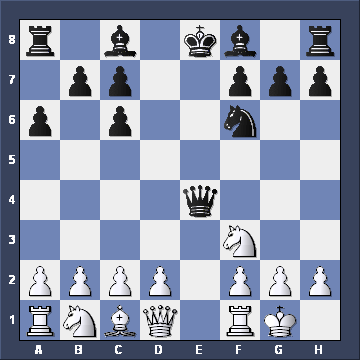
|
And in this position it's over to you to find White's next move. 




|
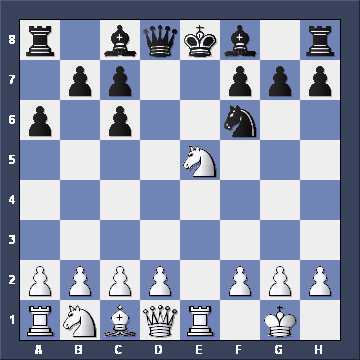
|
It's time for you to do some more work. Tell me White's next move. 




|
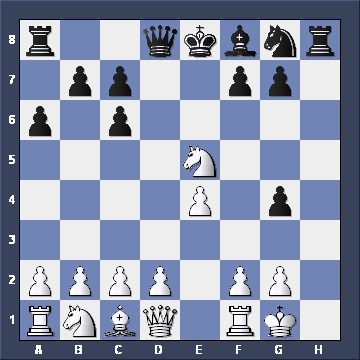
|
7. h3xg4 h5xg4 8. Nf3xe5 What should Black play next?  Qd8-e7 Qd8-e7
 Qd8-f6 Qd8-f6 Qd8-g5 Qd8-g5
 Qd8-h4 Qd8-h4 

|

|
Yes, of course! 8...Qd8-h4, planning checkmate down the h-file. White has to find a way for his King to escape, so plays f2-f4. Now what?  g4xf3 en passant g4xf3 en passant
 g4-g3 g4-g3 Qh5-h2+ Qh5-h2+
 Qh5-h1+ Qh5-h1+ 

|
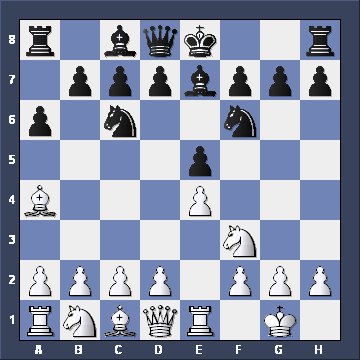
|
OK, it's time to answer another question. Do you think Black should castle in this position?  Yes Yes
 No No

|
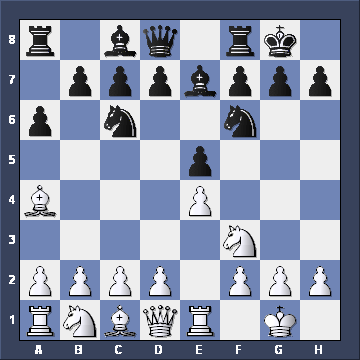
|
And, if Black castles, which of these moves should White play? Ba4xc6 Ba4xc6
 Nb1-c3 Nb1-c3 d2-d3 d2-d3
 h2-h3 h2-h3 

|

|
In this position White can win a pawn safely by taking on c6 and then on e5. If you want to play this opening with either color you've really got to understand this idea. 
|
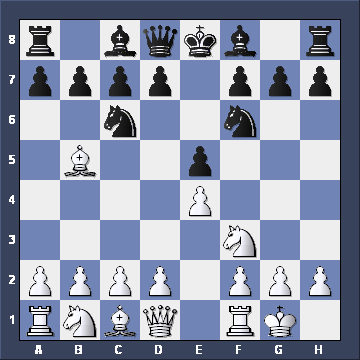
|
In this position, is it a good idea for Black to play a7-a6?  Yes Yes
 No No

|

|
Which of these moves do we NOT recommend for White here?  Nb1-c3 Nb1-c3
 d2-d3 d2-d3 Nf3xe5 Nf3xe5
 O-O O-O 

|
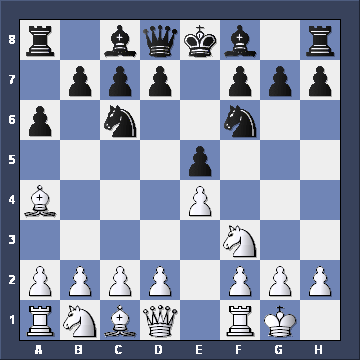
|
 Nb1-c3 Nb1-c3
 d2-d3 d2-d3 Qd1-e2 Qd1-e2
 Rf1-e1 Rf1-e1 

|
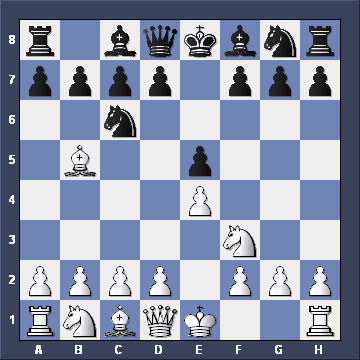
|
 a7-a6 a7-a6
 d7-d5 d7-d5 Bf8-c5 Bf8-c5
 Ng8-f6 Ng8-f6 

|

|
|